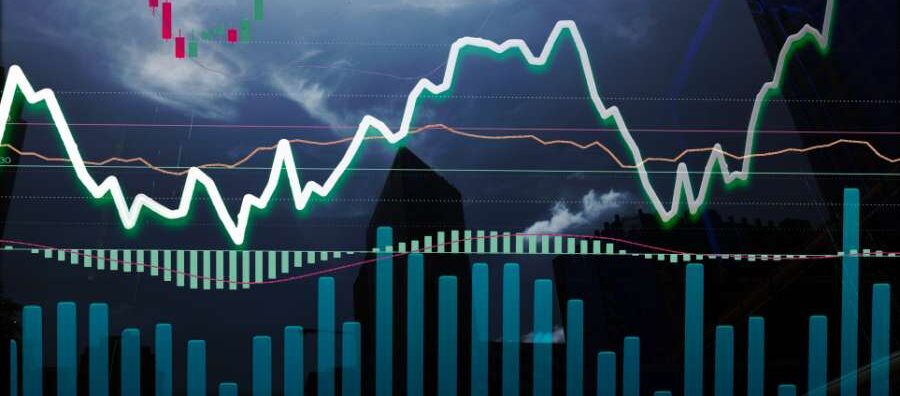RSI, or Relative Strength Index, is a widely known technical indicator used in trading to measure overbought and oversold conditions. Additionally, the RSI indicator has other applications, such as RSI divergence. This article will explore the principles and various applications of the RSI indicator.
RSI Meaning & Definition
Invented by the renowned technical analyst Welles Wilder over 40 years ago, RSI remains one of the most widely used technical indicators in today’s financial market.
Its meaning is clearly conveyed by its full name, Relative Strength Index — an index used to measure the market’s relative strength, by comparing the average gains to the average losses over a specific period.
The basic RSI principle is simple and easy to understand:
Overbought
When the price has risen too much, there is a higher probability of a price pullback.
Oversold
When the price has fallen too much, there is a higher probability of a price rebound.
The RSI indicator helps traders quantify whether the market has experienced excessive rises or falls, enabling them to identify potential buy and sell signals.
RSI Indicator Formula
Understanding the formula is essential to mastering the use of the RSI indicator. Compared to the calculation of other indicators, such as MACD, the RSI formula is very straightforward:
RSI Formula = [Average gain / (Average gain + Average loss)] x 100
With some basic math knowledge, it becomes clear that RSI readings will always range between 0 and 100. We will illustrate how to calculate the RSI using an example. Suppose today is Saturday, and the table below shows the price movements of Taiwan Semiconductor from Monday to Friday. We aim to calculate the RSI value at the close of trading on Friday.
| Rsi Indicator Calculation Example | |||||
|---|---|---|---|---|---|
| Monday | Tuesday | Wedneday | Thursday | Friday | |
| Closing Price | 500 | 530 | 525 | 515 | 535 |
| Gain/Loss | +10 | +30 | -5 | -10 | +20 |
Average gain = (10 + 30 + 20) / 5 days = 12 | Average loss = (5 + 10) / 5 days = 3
RSI value = [12 / (12+3)] x 100 = 80
As calculated from the RSI formula, the RSI value for Taiwan Semiconductor at the close on Friday was 80 which falls to the upper range of the RSI readings. This indicates that within the calculation period, Taiwan Semiconductor’s stock price experienced significant upward movement.
RSI Indicator Settings
After understanding the formula of the RSI indicator, it is clear that the most important parameter involved in RSI setting is the calculation period, which is the length of time over which the RSI value is calculated.
The graph on the left is a screenshot of the RSI settings window in TradingView, the world’s most popular charting platform. The default length is set to 14 with the price source as the close price. But what does RSI 14 mean?
RSI 14 means that the RSI value is calculated based on the close prices of the last 14 candlesticks. On a daily chart, this represents 14 trading days, while on an hourly chart, it represents 14 hours.
Some might wonder what the best RSI parameters are, but there is no definitive answer to this question. It depends on various factors such as the trading instrument, trading strategy, and risk tolerance. Generally speaking, RSI 14 is considered the most effective parameter.
RSI Indicator Readings
As mentioned in RSI formula, its readings range from 0 to 100. As show in below, there will line 3 horizen lines highlighted the 3 key levels: 50, 30 and 70 in the indicator window.
RSI levels of 30 and 70 are familiar to many traders. Most of the time, market prices fluctuate within this range. When the market moves beyond this range, it enters overbought or oversold areas, which we will elaborate on in the next section.
RSI 50 is the balancing point, representing the average gain equaling the average loss over the calculation period. Many may overlook it, but RSI 50 plays a crucial role in RSI trading strategies:
In the pullbacks of an uptrend
When the RSI falls below 50 from above, it provides a buy signal once it rises back up to the 50 level.
In the rebounds of a downtrend
When the RSI breaks above 50 from below, it signals a sell opportunity if it falls back below the 50 level again.
RSI Overbought & Oversold
As the most famous indicator for measuring overbought and oversold conditions, the RSI quantifies market sentiment with clear numerical values.
1). Overbought - RSI Above 70
When RSI readings rise above 70, it indicates that the market has entered an overbought condition, signaling a possible pullback in the near future. On the Brent Crude Oil daily chart below, the Brent price peaked at nearly $92 in early April 2024, as the RSI entered the overbought zone. Since then, until early June 2024, the Brent price had tumbled over 15%.
2). Oversold - RSI below 30
In contrast to the overbought, the RSI signals an oversold condition when the readings fall below 30, indicating a possible rebound soon. On the same Brent daily chart, the RSI reached the oversold level in early June, and the price has rebounded significantly since then.
What is RSI Divergence
Like other oscillators such as MACD and Stochastic, RSI also exhibits divergence, where the market price reaches a new high or low without the RSI value following suit. Depending on whether the divergence occurs in an uptrend or downtrend, there are two types of RSI divergence:
1). Bearish RSI Divergence
Bearish RSI divergence occurs in an uptrend when the market price reaches a new high, but the corresponding RSI value fails to confirm this increase. This divergence suggests that buying momentum may be weakening, potentially indicating a reversal.
The WTI daily chart below contains a typical bearish RSI divergence on the left, the divergence also anchos with the overbought RSI signal. In about 3 months since this bearish RSI divergence, ths WTI price had dramatically dropped by 30%.
2). Bullish RSI Divergence
Bullish RSI divergence refers to the scenario where the market price reaches a new low, but the RSI value does not follow suit. This implies that the selling pressure might be weakening, suggesting a potential shift to an uptrend in the market.
On the same WTI daily chart as the bearish divergence, there is a typical bullish RSI divergence on the right side. Following this bullish divergence, the WTI price surged from $68 to $87 within four months.
Limitation of RSI Indicator
RSI readings range between 0 and 100, which inherently limits the indicator. When RSI values approach 0 or 100, it may not accurately reflect market changes if prices continue to fall or rise.
- When the RSI enters the overbought area while the market continues to rise, the change in the RSI value may not fully capture the extent of the market’s increase.
- When the RSI moves to the oversold level and the price continues to fall, there won’t be sufficient space for the RSI value to drop proportionally.
RSI Buy & Sell Signals
RSI can effectively identify buy and sell signals, as explained in the chapters covering overbought/oversold conditions and divergence. In this section, we will provide a summary of RSI buy and sell signals.
1). RSI Buy Signals
- In the pullbacks of an uptrend, the RSI rises back above 50 after falling below it.
- The RSI value rises above 30 from the oversold level.
- When bullish divergence occurs.
2). RSI Sell Signals
- In the rebounds of a downtrend, the RSI falls back below 50 after rising above it.
- The RSI falles below 70 from the overbought level.
- When the bearish divergence occurs.
While the buy and sell signals mentioned here are fundamental principles, in practice, the market can remain in overbought/oversold levels or exhibit bearish/bullish divergence for extended periods, continually reaching new highs or lows.
The most effective approach to using RSI is to integrate it with other indicators, confirming signals by observing multiple indicators simultaneously, as we will elaborate in another article with a couple of examples. Click 「RSI Strategy in Forex, Gold, and Crude Oil Trading」 to view the details.





